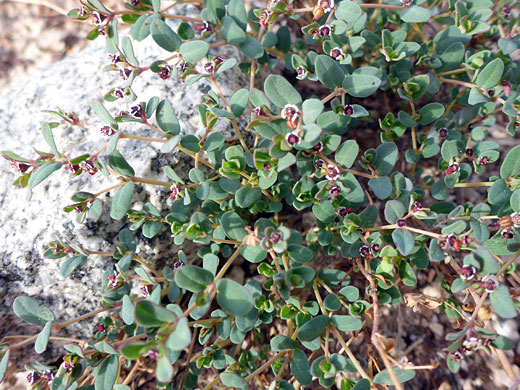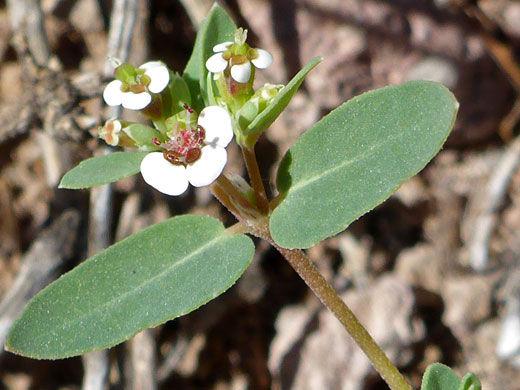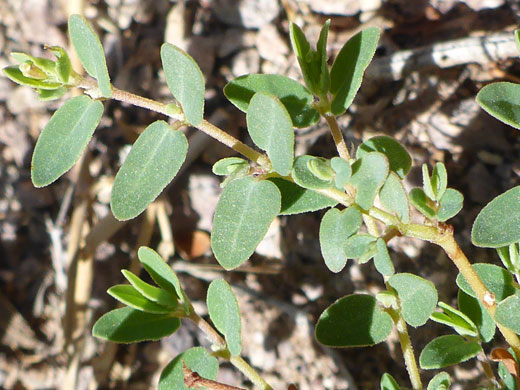Common name:
Head sandmat
Family:
Scientific name:
Euphorbia capitellata
Synonym:
Chamaesyce capitellata
Main flower color:
Range:
Arizona, far southwest New Mexico and the Big Bend area of west Texas
Height:
Stem length is up to 16 inches
Habitat:
Desert flats, slopes and washes
Leaves:
Opposite, ovate to narrowly lanceolate, up to 1 inch long
Season:
January to December
The slender, reddish stems of euphorbia capitellata grow upright or at an angle; they and the leaves can be hairless or finely hairy. The upright growth form helps distinguish this species, as most others in the same habitats are prostrate. Stems are much branched, bearing leaves at closely-spaced, opposite intervals. The hairless, greyish-green leaves have a depressed midvein, and are approximately ovate in shape. Leaf bases are unequally shaped, with one side extending more towards the stem. Lower leaf edges are finely toothed.
The tiny flowers (cyathia) form in small, head-shaped clusters at the upper leaf nodes, attached by pedicels about 0.1 inches long; they have a reddish, bell-shaped involucre ringed by white petals with red glands at the base. Flowers can appear at any time of the year, when conditions are moist.
The tiny flowers (cyathia) form in small, head-shaped clusters at the upper leaf nodes, attached by pedicels about 0.1 inches long; they have a reddish, bell-shaped involucre ringed by white petals with red glands at the base. Flowers can appear at any time of the year, when conditions are moist.
All Contents © Copyright The American Southwest | Comments and Questions | Contribute | Site Map









